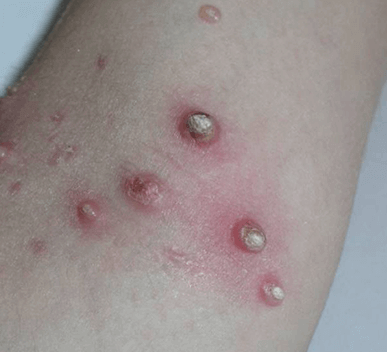Molluscum contagiosum is a skin infection that causes small pink or skin-colored bumps anywhere on the skin. It is transmitted by touching infected skin or exposure to the virus from sharing towels or clothes. Bumps may not appear for weeks to months after the virus has entered the skin. Molluscum contagiosum is not dangerous and may go away by itself, however, persistent cases may require treatment.
Tues: 8:30am - 3:00pm
Wed: 12:00pm - 6:00pm
Thurs: 8:30am - 3:00pm
Fri: Closed
Sat: 8:30am - 12:30pm
Sun: Closed
Greenvale, NY 11548
Molluscum Contagiosum


What is molluscum contagiosum?
What causes molluscum contagiosum?
Molluscum contagiosum is caused by a virus in the pox virus family. This virus is contagious through direct contact with infected skin. While more common in children, the virus can occur in people with weakened immune systems and can spread by sexual contact with infected individuals.
How dermatologists diagnose molluscum contagiosum
A detailed visual inspection of the affected area of skin will often enable your dermatologist to determine whether you have molluscum contagiosum. Because the characteristic bumps may also resemble warts and even some forms of skin cancer, your dermatologist may need to remove a small skin sample for closer inspection under a microscope to confirm the diagnosis.
How dermatologists treat molluscum contagiosum
Molluscum contagiosum bumps may disappear on their own after several months. Your dermatologist may propose a variety of treatments varying in intensity to get rid of the virus based on many factors including your age as well as the location and number of lesions present.
When considering treatment, it is important to remember that the molluscum virus is benign and will go away on its own once the immune system recognizes the virus and mounts a response to treat all active lesions. This can typically take 12 to 18 months, and therefore treatment is considered to reduce the risk of developing new lesions or spreading the infection to other people.
If the molluscum is on the face or other sensitive area, your dermatologist may prescribe a topical medication to use at home to treat the bumps.
In-office treatment often involves cryotherapy (freezing individual lesions with liquid nitrogen) or cantharidin (a painless substance used to coat the lesion). Either of these may cause a blister to form in the area, with the intention to help fight off the virus.
Another treatment called curettage utilizes a sharp tool to scrape off the individual lesions.
If many lesions are present, repeat treatments every 2 to 4 weeks may be necessary to successfully treat the virus.
If you are concerned about molluscum contagiosum, click here to schedule an appointment with our board-certified dermatologists or walk into Walk-in Dermatology at your convenience for immediate evaluation.






